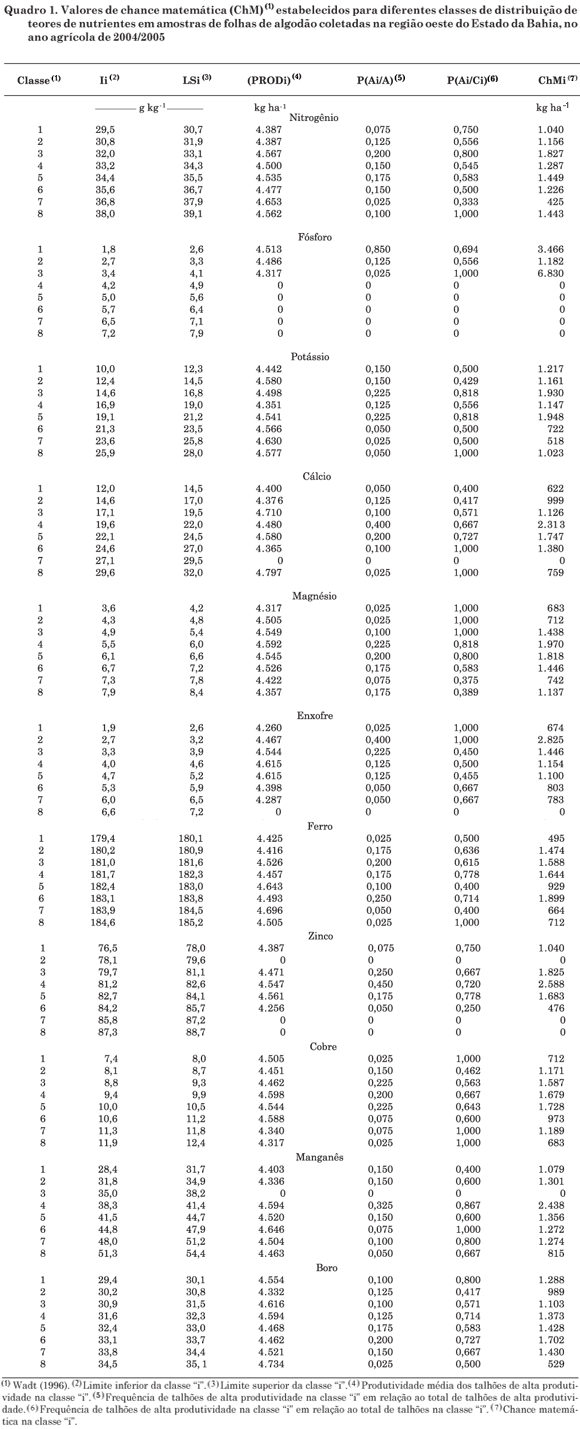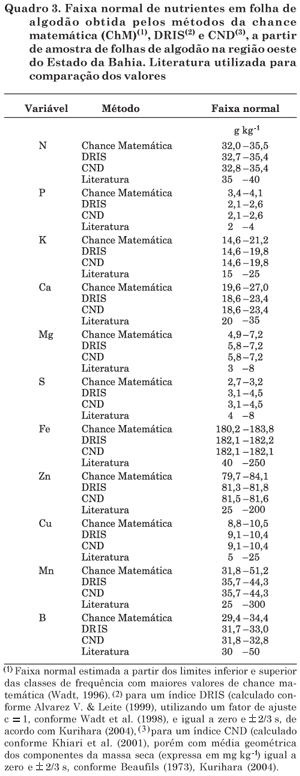The use of diagnosis methods for the determination of normal nutrient ranges is efficient since it is region-specific, thus not always applicable to other regions. This study aimed to determine the optimum nutrient ranges for cotton based on the Best likelihood (ChM), Diagnosis and Recommendation Integrated System (DRIS) and Compositional Nutrient Diagnosis (CND). The study was conducted in commercial cotton fields for the 2004/2005 growing season, in São Desidério, state of Bahia, Brazil. The total nutrient content of 65 whole leaf samples and seed cotton yield of plots with an average size of 120 ha were used as database. To adjust the method the population was divided into two classes, one with yield above and the other with yield below 4,250 kg ha-1. The values of ChM for N were higher in Classes 3 and 5 (32.0 to 35.5 g kg-1). These values agree with DRIS (32.7 to 35.4 g kg-1) and CND (32.8 to above 35.4 g kg-1). The values of ChM for yields > 4,250 kg ha-1 for P were the highest in class 3 (2.3–2.6 g kg-1). For K the classes with the higher ChM were 14.6–21.2 kg-1. In general, the normal range of nutrients could be narrowed down by the use of the methods DRIS, CND and ChM in commercial fields compared to the critical levels and sufficiency ranges by conventional methods cited in the literature.
nutrition; nutritional monitoring; Gossypium hirsutum








